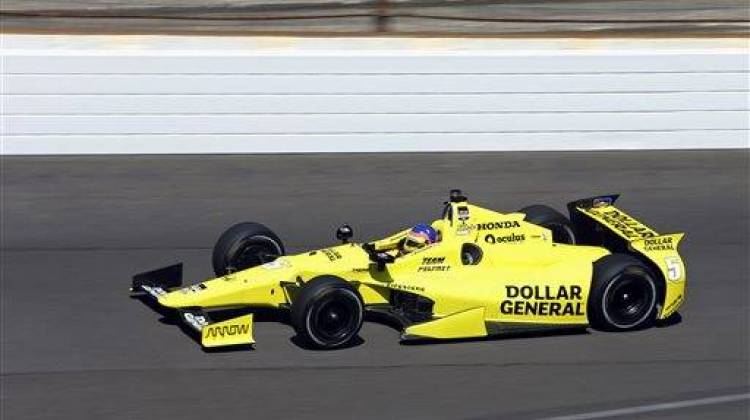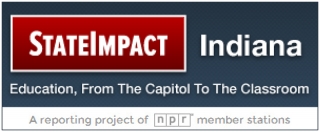It was the first race North Vernon resident John Greathouse ever attended – with gusty winds and temperatures in the balmy mid-60s.
May 30, 1955 would be a day Greathouse would remember clearly nearly 60 years later.
The Indianapolis Motor Speedway has changed significantly since that day, Greathouse said. But as change became a second event to the race – as the cars became faster and sleeker, and as the car technology became something from a science fiction fantasy – the more things stayed the same.
Because as Greathouse said, there’s always excitement when the race begins – and there’s always a thrill when a driver crosses the yard of bricks.
New road course, small track improvements
Still, the race itself will look a lot different to Greathouse this Sunday than it did to him in 1955.
IndyCar fans and visitors to the Indianapolis Motor Speedway are seeing big changes at the Speedway as well as the month of May.
The IMS updated its road course – which holds events like MotoGP races – so the course could pass IndyCar road course regulations. This month, IMS hosted its first road course race for the sport, the Grand Prix of Indianapolis. The course uses part of the 2.5-mile oval track and winding roads within the infield.
Greathouse said he was looking forward to watching the new race, and said he hopes it will bring more fans to attend and watch the Indianapolis 500 later in the month.
Besides the updated road course and addition of the Grand Prix, other changes to the track itself include renovations to some grandstand sections and the removal of the older carousel scoreboard. Other changes fans will see before the 2016 Indy 500 race – which is the 100th running of the 500 – include a new scoring pylon, new video boards and other smaller upgrades.
For the Grand Prix, IMS constructed viewing mounds and other roadside viewing areas for fans to move about the course. Like during a golf match, spectators were able to move from various course corners and turns to watch the race from different perspectives.
How is IMS paying for this?
The updates and improvements are being funded in part by a government assistance plan the state legislature agreed on last year.
The state allotment could reach $100 million, but the loan payments to the Speedway are not in a lump sum – but spread out over the next 20 years. The state will be loaning the Speedway $5 million each year, in combination with IMS matching that with $2 million of their own money to make the changes.
The measure collects the state tax money the Indianapolis Motor Speedway generates, and allots that money back to the track for improvements and changes.
The track will not receive the full $5 million a year if IMS doesn’t generate enough in tax collections.
State Senate Appropriations Chairman Luke Kenley, R-Noblesville, said the state legislature approved the assistance plan so the Speedway could update the facility to and above current standards.
“The Indianapolis 500 is probably one of the four or five most highly recognized and known sporting events in the whole world,” Kenley said. “This just goes a long way for them to present a product that keeps them in that top tier.”
One of the previously proposed changes to the Speedway – installing lights to run night races – was ruled out by IMS earlier this year, even though it had been part of the discussions as legislators approved the deal last year.
“It doesn’t change our outlook,” Kenley said. “We know they have a lot of substantial upgrades they need to make to bring the Speedway to the current times. I think this was a good deal for the state, and I’m excited about the new management and the leadership at the Speedway. I think they’ve already justified out faith in them.”
Indy 500, month of May impact
Out of 18 races in the 2014 season – races across the country and internationally – the Indianapolis 500 is still the largest race for attendance in the IndyCar Series.
Morgan Greenlee, senior communications manager with Visit Indy, said the track brings in more than 300,000 people for the race and race events – and more than $336 million in economic impact in Indianapolis for the entire month of May.
That chunk of money may increase with this year’s event changes – including the addition of the Grand Prix of Indianapolis.
Greenlee said she expects the city will study the economic impact study of the Grand Prix to see if it added value.
Where IndyCar has come from in 20 years
The Indianapolis Motor Speedway and the Indianapolis 500 are important aspects of the IndyCar Series, but it’s not the whole story.
The IndyCar Series itself has had a turbulent history in the past 20 to 25 years.
In the early 1990s, open-wheel racing sanctioning body CART, Championship Auto Racing Teams, and IMS owner Tony George had a massive falling out.
That led to a split in the sport and the creation of a new series, the Indy Racing League, which was pitted against CART.
CART, which later became Champ Car in 2004, kept the major drivers on the scene at the time, while the Indy Racing League held the biggest U.S. open-wheel race, the Indianapolis 500.
A division of resources and a combination of other factors – the rise of NASCAR as a huge power in the United States motorsport world and the emergence of cable television meant competition for more eyes on more channels – eventually led to the popularity of open-wheel racing in the U.S. taking a dive. NASCAR began collecting new sponsors, new markets and new drivers from open-wheel racing.
In 2008, Champ Car and the Indy Racing League reconciled, joining the two series’ once again. And for the past few years, eyes have been on the Indy Racing League, now named IndyCar, to see if the sport can move back to its former glory.
Dr. Joyce Young, professor of marketing at Indiana State University, teaches courses on motorsports marketing, said the critical challenge that faces IndyCar is drawing in a younger demographic – which is the same problem facing NASCAR.
She said as an industry runs its course, it can sometimes settle into a particular level of sales with its product.
“If I look at IndyCar, they’re fighting the decline stage,” she said. “NASCAR is at the maturity stage. There’s really no growth for either of those series at this time. NASCAR is better off because they’re mature so they’re still OK. IndyCar has been fighting decline now for several years.”
Attracting new fans
Young said it’s too early to see what the long-term impact of the new Grand Prix race, changes to qualifying weekend and the addition of a concert will have on IMS and the month of May. She said it will also be interesting to see what Verizon – a new sponsor – will bring to the table for the IndyCar Series.
“I think the question more is are they taking steps that may position them well in the future?” Young said. “I don’t know if we’re going to see anything that they’re doing pay off now.”
But Young did say it’s crucial for the IndyCar Series, as well as NASCAR and other motorsport leagues, to start engaging a younger demographic.
“The average age of the fans in both NASCAR and IndyCar just keeps getting older,” Young said. “The younger demographic just isn’t interested.”
Attracting that younger fan base is critical, she said, to get new fans to be engaged and loyal to the sport for the long term.
The industry is changing she said, moving the focus away from just racing to an entertainment-based racing experience.
And the Indianapolis Motor Speedway has ramped up its non-racing entertainment events. The infield Snakepit area is featuring a new way to experience the race – “glamping,” or glamorous camping. Spectators can camp out in the infield for the Indianapolis 500 race weekend. The track has pitched tents for glampers, and the individual camping packages can include a queen-sized bed with bedding and sheets and a table for two. Other packages include two twin beds, two cots or four cots.
But that’s not the only addition to race weekend.
Doug Boles, president of the Indianapolis Motor Speedway, said it’s not just the new race that he hopes will introduce new fans to the Indianapolis 500 event and the IndyCar sport – but the Jason Aldean concert the night before – which is expected to draw upwards of 35,000 country music fans. The track also made changes to the race qualifying format, which took place last weekend.
“[The race] is going to be great for the facility, but we think really what it’s going to do is it’s going to drive excitement and start us off at a higher level than we normally have so that the Indianapolis 500 pays off with a bigger win at the end of May.”
The ABC network covered the Grand Prix race, qualifying weekend and will air the Indy 500 – putting Indianapolis and the Indianapolis Motor Speedway on national television three consecutive weekends.
Another big change to the series itself is the new title sponsor. Verizon took over this year as the series sponsor after IZOD dropped its contract with IndyCar last year.
“We can’t wait for this partnership to develop,” Boles said. “I think fans are going to see a lot more promotion around the series. It’s fantastic for the series, it’s fantastic for our brand, and for the Verizon brand.”
Sharing the love of the sport
Greathouse is an example of how the generations of race fans have changed. Young said there’s less interest from the 18 to 30-something demographic in cars and automobiles – and thus motorsport racing – than in the past. It’s the draw of entertainment – or in Greathouse’s case, cajoling his young family members to experience the race with him – that brings in the younger crowd.
One of Greathouse’s daughters, Linda Greathouse, went to the Indianapolis 500 for the first time last year.
“She drug her feet for about four years, but then she finally said, ‘OK, Dad,’” Greathouse said.
Greathouse has been able to share his love of the IndyCar sport with other members of his family, including his father and a son-in-law who works for a current driver’s crew.
“I was a little skeptical at first if I would like it or not, but I ended up loving it,” Linda Greathouse said. “It was a very exciting race and I enjoyed just taking in the atmosphere.”
“It was just fun having her with me,” her father said.
Greathouse said he’s excited for the changes this year’s race is bringing – and is looking forward to additional changes and improvements in the next few years.
But nothing tops the thrill of the race itself.
“The first 10 or 15 laps are about as exciting as anything you can see in any sport,” he said. “There’s been poets attempt to write about those first 10 to 15 laps. That, to me, is very exciting.
He said he recommends everyone go to the Indy 500 race at least once – especially if you live in Indiana.
“You may never go back again, but I guarantee you will always remember that day.”
 DONATE
DONATE










 Support WFYI. We can't do it without you.
Support WFYI. We can't do it without you.